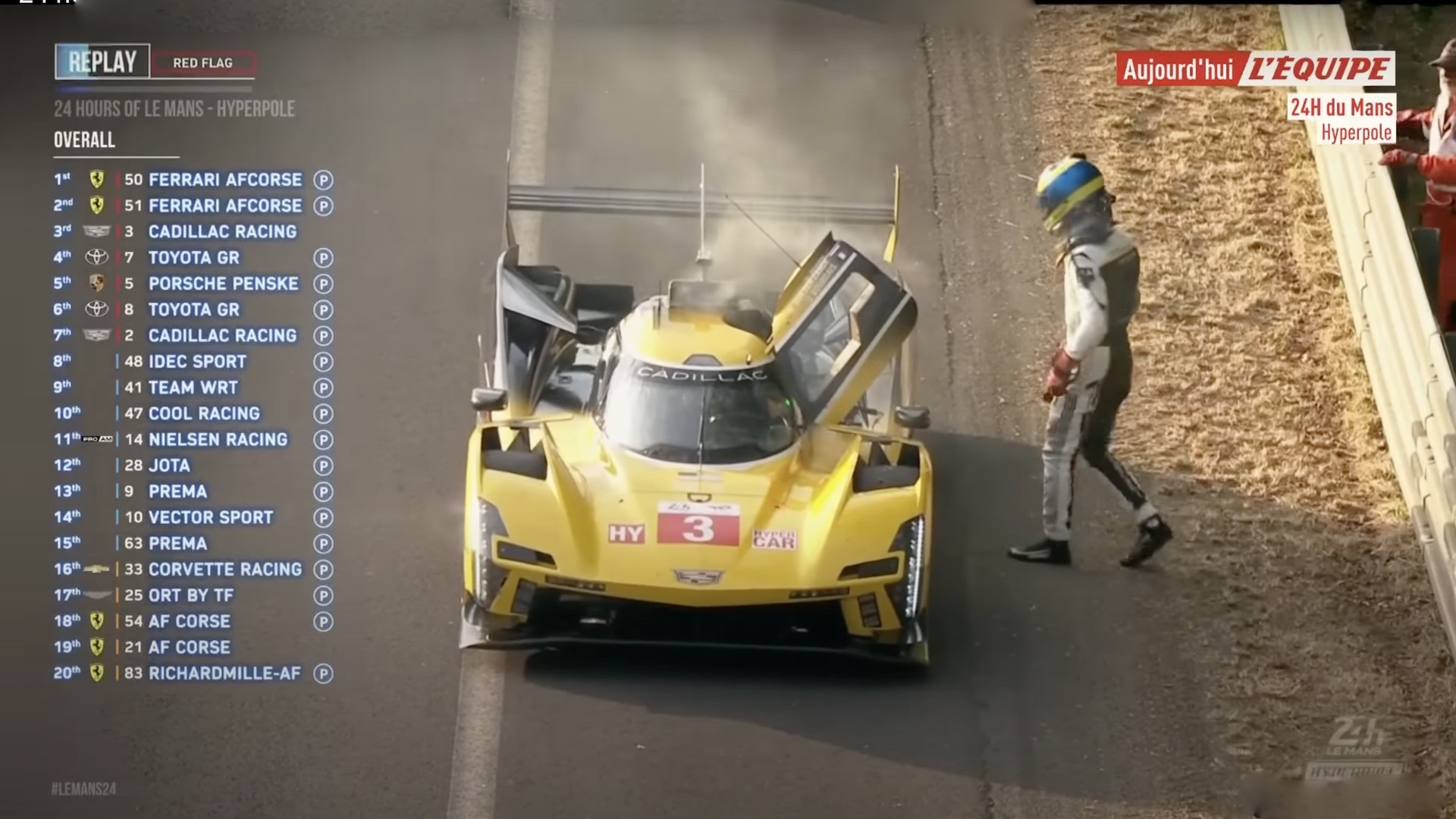

The 24 Hours of Le Mans is unlike any other race in the world. The race track, an eight-mile-long circuit made up largely of public roads, represents an enormous challenge for mechanics and racers alike. But before you can race at Le Mans, you must first qualify. After setting the third-fastest time during Friday’s Hyperpole qualifying run, the No. 3 Cadillac Hypercar caught on fire and was forced to retire from the session. This triggered a maniacal effort by the Chip Ganassi Racing crew to get the No. 3 in shape for race day, while also making sure the other two Cadillacs were free of similar issues.
Experiencing a major issue like this between qualifying and race day is far from ideal. Fire destroys things, obviously, but even if it doesn’t outright destroy them, extreme heat can affect the molecular structure of a particular component. Carbon fiber bodywork, metal fluid lines, rubber hoses, and other composite materials can all be severely damaged even if they look “ok” externally.

Getting the car ready for 24 hours of racing required the expertise of both Ganassi Racing and Cadillac, who immediately got to work after the car was brought back to the pits. I caught up with GM’s Propulsion Lead Engineer Adam Trojanek and LMDh Vehicle Technical Lead Aaron Pfeifer at Le Mans on Saturday, who agreed that the road to recovery started with Sebastien Bourdais’ expert response when the fire broke out.
“Bourdais knew exactly what to do in this type of situation,” Trojanek told me. “It all comes down to driver training—he was able to pull the car over, turn the car off, and start working to put out the fire.”
“Drivers and the series have meetings where they train and learn where fire crews are around the track, and what their specific [station] colors might be,” Pfeifer added. “This way the drivers know to get right there if they are suffering from a fire. Any instance like this is always going to be an issue for the car, but the driver is certainly key in limiting the damage.”
Once the No. 3 made it back to the pits, the crew quickly got to work on tearing it apart and inspecting every inch of it. The team claims that it suffered “minimal” damage but chose to replace the engine to err on the side of caution. Bodywork, too, had to be replaced, along with many other soft components that were affected.
“Our first priority was to find out exactly what happened,” Trojanek told me. “Once we identified the source we did a quick check with the other two cars to avoid a repeat. Then it was all about replacing parts to get ready for race day.
“With the car disassembled, we do a part-by-part visual review,” he added. “With the fire retardant spread all over the components, it was hard to see things clearly at first, but eventually we were able to get a good visual. Then we inspect things physically to see if things are stiff, etc.”
From that point on, the biggest challenge was mostly logistical. According to Trojanek, the repair itself added at least eight more hours of additional work. The team opted to not work overnight given the racing marathon ahead, so it completed some of the work immediately after the fire and the rest on Friday. That extra repair time doesn’t include the effort put in by the team to make sure it had the necessary stock. When a big repair must be completed, it’s a joint effort by chassis-maker Dallara, GM Powertrains, and Ganassi to make sure they have the right parts necessary to pull it off.

In the end, the No. 3 was able to run during the Saturday afternoon warm-up session, completing a full diagnostics check of the new components. It will ultimately start in eighth place come race time, with the No. 2 Cadillac starting sixth, and the No. 311 starting from 12th place.
Got a tip? Email me at tips@thedrive.com